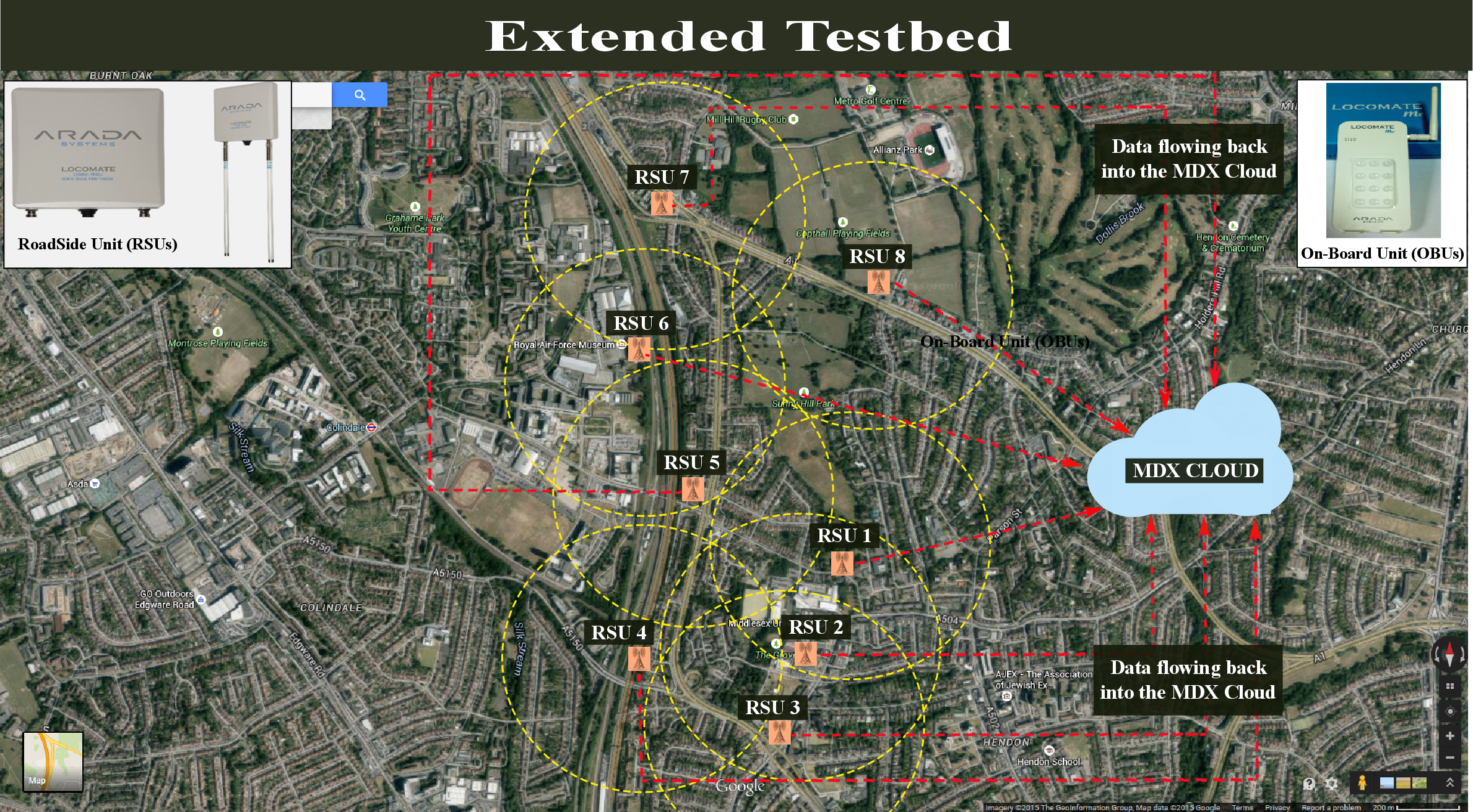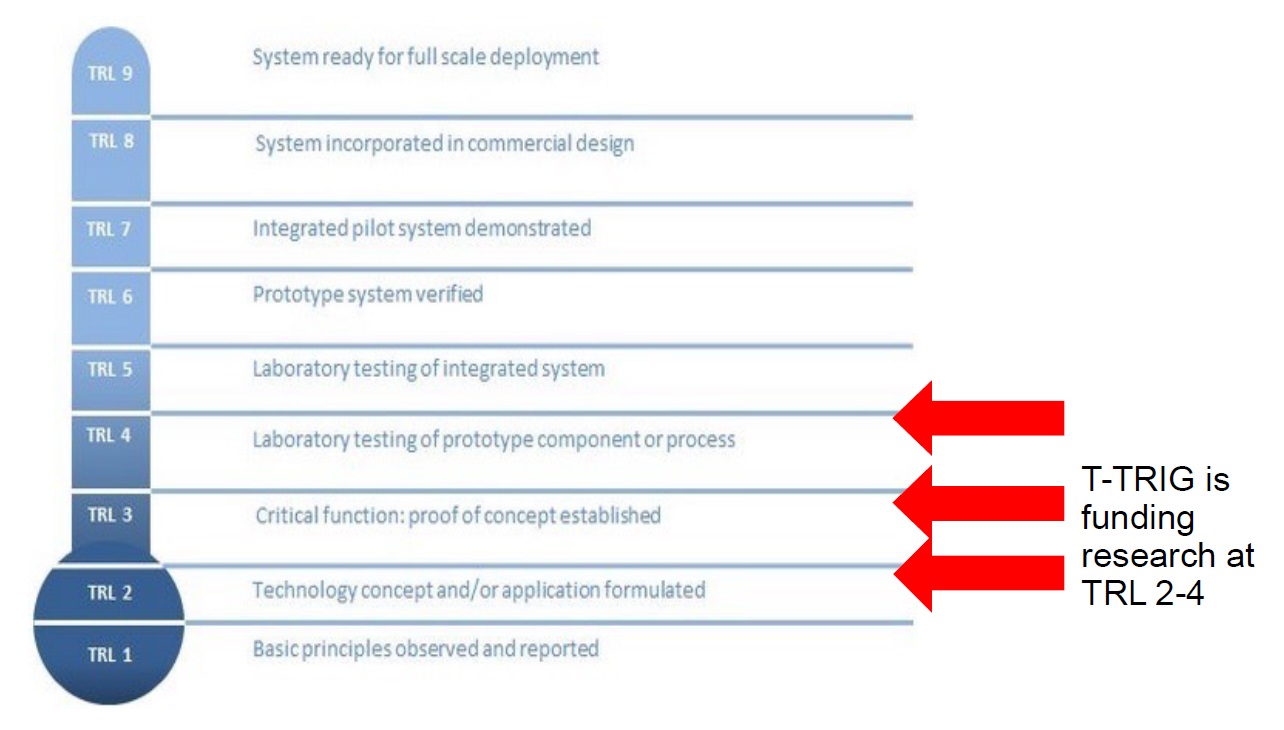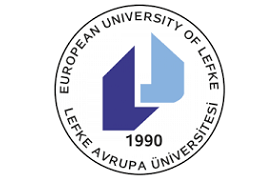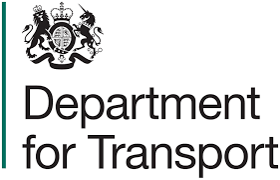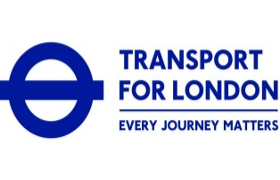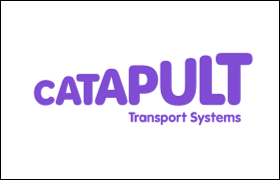Department for Transport (DfT) – Transport Technology Research Innovation Grant (T-TRIG) June 2015
BUILDING AN INTELLIGENT TRANSPORT INFORMATION SYSTEM PLATFORM FOR SMART CITIES
Extended Testbed @ Middlesex University (around Hendon Campus and Along A1 and A41 and Barnet area)
Project Outline:
Developing a prototype test-bed to monitor vehicles in the Transportation Network using VANET Technology, thus facilitate the development of a better transport system using intelligent algorithms.
Project Summary:
Vehicular Ad-Hoc Networks (VANETs) are new networks that will enable support for life-critical and infotainment applications in vehicular environments. VANETs will be brought about by the deployment of Roadside Units (RSUs) located along the transport infrastructure and On-board Units (OBUs) in the vehicles or worn by pedestrians or cyclists. VANETs are now receiving a lot of attention as it is regarded as a major part of research into Smart Cities of the Future.
Department of Transport (DfT) has awarded us T-TRIG (Transport-Technology, Research and Innovations Grant). This project is to build a prototype VANET network on the Middlesex University campus and its surroundings roads. This is a major route into Central London and would allow us to better understand the use of VANETs in urban and motorway environments. The information from this VANET Testbed will be stored and processed using a Cloud platform at Middlesex University and will enable visual and data analytics to be applied such that this information will also be available to everyone using smart phones, etc.
Grant Specifications
1. Background information on T-TRIG
1.1.Overview
1.1.1. The Department for Transport (DfT) is holding an open-call competition for grant funding of innovative research projects.
1.1.2. The Transport Technology Research Innovations Grant (T-TRIG) is a new scheme that enables the Department to fully fund research projects in support of innovative ideas/concepts that facilitate a better transport system. Although this competition is open to all transport challenges, applicants should align their proposals with the Department’s priorities.
1.1.3. The scheme will fund research into a wide-range of novel and innovative solutions that use science, engineering and technology to advance the UK’s transport system. The purpose of T-TRIG is to stimulate ideas in transport technology and systems, encourage innovation, and support the advancement of technology based transport products, processes and services. Funded projects may also have wider benefits for the Department, such as developing the evidence base for policies or informing decision-making.
1.1.4. This T-TRIG competition process is managed by the Transport Systems Catapult (TSC) on behalf of the DfT. The grant and all legal relationships will be between the DfT and the grant holder.
1.2.Who can apply for T-TRIG?
1.2.1. T-TRIG is open to micro, small and medium-sized businesses, academia and other organisations, to support research projects which could lead to the development of successful new transport products, processes or services.
1.3.Who provides the funds?
1.3.1. The DfT’s Science and Research Division is responsible for funding this competition.
1.4.What is the Technology Readiness Level range for T-TRIG?
1.4.1. The competition is designed to support the development of an initial prototype, a proof of concept or a feasibility study that demonstrates an innovative solution to transport challenges. In terms of Technology Readiness Levels (TRL), this funding route will indicatively support projects between 2 and 4 on the TRL scale (see Figure 1). Funding at this early stage enables researchers to carry out basic exploratory studies which could lead to pioneering ideas being developed into new products, processes, models or services for transport applications.
Figure 1: Technology Readiness Level (TRL) scale:
VANET - Vehicle Ad-Hoc Networks Research group at Middlesex University
Latest posts by VANET - Vehicle Ad-Hoc Networks Research group at Middlesex University (see all)
- Latest news ! Awarded Contracts +! Congratulations to the MDX stars ! - November 4, 2017
- Full Coverage Map of the MDX Extended Connected Vehicle Testbed – A41/M1 (Motorway) - October 25, 2017
- MDX Extended VANET Testbed – A41/M1 (Motorway) – You have been VANETed is back….!!! - December 4, 2016

